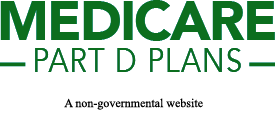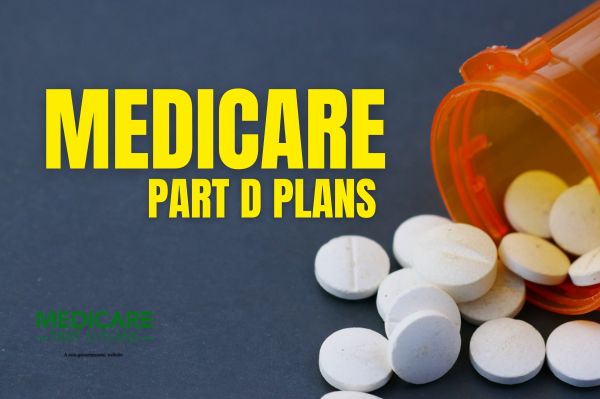Find a Medicare Part D prescription drug plan

Medicare Part D
Prescription Drug Coverage 2026
How to Enroll in Medicare Part D Plans for 2026
Enrolling in a Medicare Part D Plan
This article will walk you through each step of how to enroll in Medicare Part D Plans
Key Takeaways
- Medicare Part D could provide optional prescription drug coverage for Medicare beneficiaries, likely offering various plan types like Standalone PDPs and Medicare Advantage Plans.
- Eligibility for enrolling in Medicare Part D requires U.S. citizenship, residency in the plan’s service area, and enrollment during specific periods like the Initial Enrollment Period or Annual Coordinated Election Period.
- The Low-Income Subsidy (LIS) program could offer financial assistance with some premiums and deductibles for low-income individuals, potentially reducing prescription drug costs for eligible beneficiaries.
Understanding Medicare Part D
Medicare Part D is an optional prescription drug coverage program that could help Medicare beneficiaries manage their prescription drug costs, which might include Part D prescription drug options, Part D drugs, and generic drug options.
Likely provided by private insurance companies approved by Medicare, some of plans could potentially reduce the financial burden of purchasing necessary medications through the Medicare Part D program, likely offering a valuable prescription drug benefit.
Medicare Part D coverage may be offered through various plans, such as:
- Standalone Prescription Drug Plans (PDPs)
- Certain Medicare Advantage Plans (MA-PDs) that may incorporate prescription drug coverage
- Special Needs Plans (SNPs), which cater to individuals with specific diseases or characteristics. Additionally, Medicare Part D plans will likely be available for those seeking comprehensive drug coverage.
The primary objective of Medicare Part D will likely be to provide access to necessary medications for Medicare beneficiaries, thereby supporting their overall health and wellbeing.
Most of the plans will likely be designed with a defined standard benefit, which may include options like an Initial Deductible, possibly offering flexibility to meet different needs.
Eligibility for Medicare Part D may extend to seniors and individuals with certain disabilities, possibly offering crucial support in managing medication costs.
Higher-income beneficiaries may face higher premiums due to the Income-Related Monthly Adjustment Amount (IRMAA), which might affect their overall drug coverage costs.
Understanding these basics sets the stage for making informed decisions about your Medicare Part D plan. Now, let’s explore the eligibility requirements for enrolling
Eligibility for Medicare Part D in 2026
To enroll in a Medicare Part D plan, you must first meet certain eligibility criteria. Anyone with Medicare can enroll in a Part D plan, possibly making prescription drug coverage accessible to a broad range of individuals. However, there are specific conditions that you need to be aware of.
Applicants must meet the following criteria to qualify for Part D enrollment:
- Be U.S. citizens or legally present residents.
- Reside in the service area of the chosen Part D plan, which helps ensure the plan could effectively cover your prescription drug needs.
- Have a permanent residence in the geographic region where the plan is offered.
Enrolling during a valid election period is crucial. These periods include:
- The Initial Enrollment Period
- The Annual Coordinated Election Period
- Special Enrollment Periods for specific circumstances like moving or losing other creditable drug coverage
Being mindful of these timelines helps avoid missing enrollment opportunities.
Incarcerated individuals cannot enroll in Medicare Part D until they are released, ensuring that only those who may actively use the benefits are enrolled. Knowing these eligibility requirements could help you prepare for the enrollment process.
Enrollment Periods for Medicare Part D
Enrolling in Medicare Part D during the correct enrollment period is vital to avoid future penalties and help ensure continuous coverage. The Initial Enrollment Period (IEP) is the first opportunity for most people to enroll. This period starts three months before you turn 65, includes your birthday month, and extends three months after.
The Annual Coordinated Election Period, also known as the Annual Open Enrollment Period, runs from October 15 to December 7 each year. During this time, you can join, switch, or drop a Medicare drug plan, with coverage beginning on January 1 of the following year.
Special Enrollment Periods (SEPs) are available for specific situations, including:
- Moving outside your plan’s service area, which gives you a two-month window to switch to a new Medicare Advantage Plan or drug plan.
- Losing creditable drug coverage, allowing you to enroll in a Medicare drug plan within two months.
- Returning to the U.S. from abroad.
- Losing employer or union coverage.
Be aware of the late enrollment penalty for Medicare Part D:
- If you delay enrolling and lack creditable drug coverage for 63 days or more, you will incur a penalty.
- This penalty may add up to 1% to your monthly premium for each month you delay signing up.
- The penalty is calculated for as long as you remain enrolled in a Medicare drug plan.
Understanding these enrollment periods will likely help you plan ahead and avoid unnecessary penalties. Now, let’s explore the various methods to enroll in a Medicare Part D plan.
Methods to Enroll in a Medicare Part D Plan
There are several methods to enroll in a Medicare Part D plan, so you can choose the one that best suits your preferences and needs. First and foremost, you must have Medicare Part A or Part B to be eligible for Part D enrollment.
One of the most convenient methods is enrolling online through this website. Our website allows you to compare different plans, assess your options, and complete the enrollment process from the comfort of your home.
Alternatively, you can enroll by calling one of our licensed agents at 1-866-930-4039 (TTY 711) Mon-Fri: 8am-8pm EST. This option provides the opportunity to ask questions and receive guidance from our agents, which can be particularly helpful if you need additional support.
With these methods in mind, you can confidently proceed with enrolling in a Medicare Part D plan. Now, let’s discuss how to choose the right plan for your specific needs.
Choosing the Right Medicare Part D Plan
Choosing the right Medicare Part D plan will likely require careful consideration of several factors. One of the best tools at your disposal is the Plan Finder Tool on this website, which allows you to compare different Part D plans based on your specific needs.
When selecting a plan, consider the following:
- Assess whether it covers the specific medications you require.
- Ensure that your prescriptions may be included in the plan’s formulary, as not all plans cover all medications.
- Check if your preferred pharmacies are in-network, since this could significantly impact your access to medications and overall costs. Additionally, some plans may offer prescription drug coverage.
Understanding the potential coverage limitations or restrictions that may apply to the formulary drugs listed in the plan’s formulary is also important. Some plans may also have prior authorization requirements or quantity limits to consider.
Local agencies and State Health Insurance Assistance Program (SHIP) counselors are valuable resources for Medicare. They:
- Answer questions
- Assist with Medicare enrollment and plan selection
- Offer free counseling
- Help you navigate the complexities of Medicare Part D.
By taking these steps, you can select a Medicare Part D plan that meets your needs and provides the coverage you require.
Understanding the Costs Involved
When considering a Medicare Part D plan, understanding the various Medicare costs involved is crucial. These costs might include:
- Premiums
- Deductibles
- Copayments
- Coinsurance
These costs may vary significantly between plans. The standard premium for Medicare Part D might vary based on factors such as regional costs and the specific plan you choose. Consider the overall costs that may be associated with the plan, rather than just focusing on the premiums alone.
Cost-sharing structures in Medicare Part D may include:
- Copayments and coinsurance, which might differ by drug tier.
- An annual deductible that may be adjusted each year based on inflation.
- After reaching the deductible, beneficiaries may pay up to 25% of the gross covered prescription drug costs until they reach the out-of-pocket threshold.
Once you reach the out-of-pocket threshold, you enter the catastrophic coverage phase, where no additional out-of-pocket costs for drugs may be required.
This coverage gap phase could potentially provide financial protection against high drug costs and may also limit out of pocket spending.
Be aware of the late enrollment penalty:
- It adds up to 1% to your monthly premium for each month you delay signing up.
- The penalty is calculated for up to 63 days without creditable coverage.
- This penalty is applied for as long as you remain enrolled in a Medicare drug plan.
- It may increase your costs over time.
By understanding these potential costs, you can make informed decisions about your Medicare Part D plan.
See plans in your area instantly!
Advertisement
Low-Income Subsidy (LIS) Program
The Low-Income Subsidy (LIS) program, also referred to as Extra Help, will likely aim to assist low-income individuals in managing their prescription drug expenses.
This program could potentially provide assistance with:
- Premiums
- Deductibles
- Copayments
- Coinsurance
To qualify for the full Low-Income Subsidy, individuals must have an income limit of about $23,475 or less, about less than 150% of the Federal Poverty Level. Individuals who receive Supplemental Security Income (SSI) or full Medicaid coverage may be automatically deemed eligible for Extra Help.
The LIS program could potentially reduce participants’ prescription drug expenses by covering certain costs associated with Medicare Part D. However, if an individual chooses a more expensive plan while qualifying for the full premium subsidy, they must pay the difference in premium.
Applications for the Low-Income Subsidy will likely be processed by the Social Security Administration, which also redetermines eligibility every year.
Understanding the LIS program could provide valuable financial relief for those who qualify.
What to Do If You Miss the Enrollment Deadline
Missing the enrollment deadline for Medicare Part D can have significant consequences, such as incurring a late enrollment penalty. This penalty adds about 1% to your monthly premium for each month you delay signing up and will likely be calculated for as long as you remain enrolled in a Medicare drug plan.
If you disagree with the late enrollment penalty, you have the right to appeal the decision after joining a Medicare drug plan. The appeal process allows you to present your case and potentially have the penalty reconsidered.
For those who involuntarily lose creditable coverage, there is a Special Enrollment Period of 63 days during which you can enroll in a Medicare drug plan without incurring a penalty.
Understanding these options could potentially help you avoid unnecessary costs and ensure you have the plan’s creditable coverage status you need.
How to Get Help with Enrollment
Getting help with Medicare Part D enrollment is crucial for many individuals, and there are several resources available to assist you. State Health Insurance Assistance Programs (SHIPs) offer free counseling to help you understand your options and enroll in the right plan.
SHIPs offer services that assist individuals in understanding and enrolling in Medicare Part D.
These counselors are trained to answer your questions and provide guidance on the enrollment process. You can locate your local SHIP for one-on-one insurance counseling through available online resources.
By taking advantage of these resources, you could ensure a smooth enrollment process and find the plan that best meets your needs.
Find a Plan and Enroll Online Yourself!
Advertisement
Summary
Enrolling in a Medicare Part D plan
The key to a smooth enrollment process is being proactive. Make sure to compare different plans using this website, assess your medication needs, and take advantage of resources like SHIP counselors for personalized assistance. For those who qualify, the Low-Income Subsidy (LIS) program may also provide financial relief.
Remember, timely enrollment helps you avoid penalties and possibly ensures continuous coverage. By following the steps outlined in this article, you can confidently navigate the Medicare Part D enrollment process and secure the prescription drug coverage you need for a healthy future.
Frequently Asked Questions
Who is eligible for Medicare Part D?
Anyone who is eligible for Medicare, including U.S. citizens and legally present residents, can enroll in Medicare Part D.
What are the enrollment periods for Medicare Part D?
Medicare Part D has three key enrollment periods: the Initial Enrollment Period, the Annual Coordinated Election Period, and Special Enrollment Periods. It’s important to be aware of these times to ensure you have the coverage you need.
How can I enroll in a Medicare Part D plan?
You can enroll in a Medicare Part D plan by entering your zip code into this website or by calling one of our licensed agents at 1-866-930-4039 (TTY 711) Mon-Fri: 8am-8pm EST. Ensure you have your personal information ready to streamline the process.
What are the potential costs involved in Medicare Part D?
Medicare Part D costs will likely consist of premiums, deductibles, copayments, and possible late enrollment penalties. It’s essential to understand these factors for effective budget planning.
What is the Low-Income Subsidy (LIS) program?
The Low-Income Subsidy (LIS) program assists low-income individuals in managing their prescription drug expenses by covering certain costs such as premiums, deductibles, and copayments. This support could potentially alleviate the financial burden of necessary medications.
Begin Choosing your plan
Advertisement
ZRN Health & Financial Services, LLC, a Texas limited liability company.


